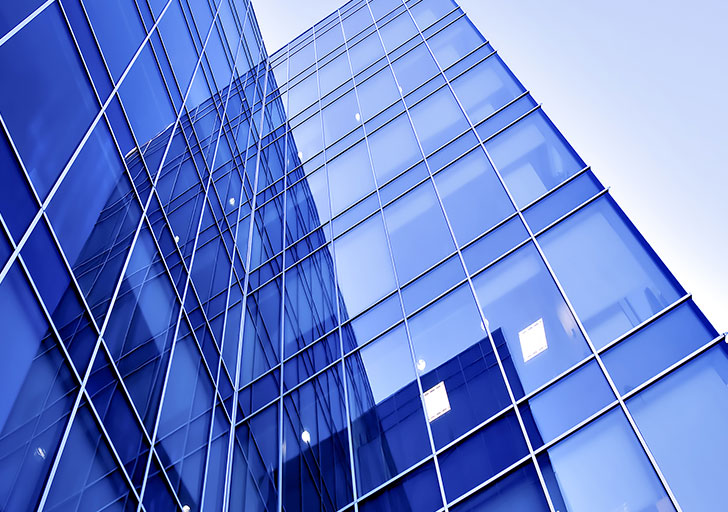Structural glazing systems are types of curtain wall systems consisting of glass that is bonded or anchored back to a structure without the use of continuously gasketed aluminum pressure plates or caps. The glass can be monolithic, laminated, dual-glazed or even triple-glazed insulating glass units (IGUs). The back-up structure may use horizontal and/or vertical aluminum mullions or be a glass mullion, steel blade, cable or stainless steel rod. Structurally glazed systems create a greater transparency than traditional captured systems.
There are many benefits to using structural glass within a building, it can offer a greater coherence and connection between the natural world and our buildings, while still protecting us from the elements. It allows sunlight to flood a home without any attendant annoyances that have previously hampered glass structures.
Structural glazing benefits
- Lightweight
- Excellent exterior characteristic
- Weather ability
- Vibration Damping
- Sound insulation
- Heat insulation
Advantages of structural glazing
Structural glazing can offer a greater coherence and connection between the natural world and our buildings, while still protecting us from the elements. It allows sunlight to flood a home without any attendant annoyances that have previously hampered glass structures, such as overheating and the subsequent loss of heat at night. In fact, advances in technology mean that insulation is actually one of the great advantages of using structural glass.
- In structural glazing the two materials predominantly used are glass and aluminium, which neither corrode nor decay when comparing other conventional building materials like wood, iron, steel etc.
- Light penetrates the structurally glazed building through the glass facades and hence their employment translates to reduced energy bills
- The processed glass used in the structural glazing system also insulates the building from heat and sound
- Fulfills the architectural view for the external decoration and beauty.
- Using glass in the interior of the building saves the space inside the building.
- Glass cladding in buildings fulfills the functional requirement of lighting heat retention and energy saving
- Glass is an excellent material for thermal insulation, waterproofing, and energy conservation.
- The glass is a bad conductor of heat, hence it saves energy in air conducting of the building.
- Toughened glass can have a good interior design with the use of glass in the transparent staircase, colored shelves, ceiling etc.
- Provides excellent sound insulation
- An easy-to-clean surface
- Gives protection for the load-bearing structure
Type of structural glazing systems
- Unitized Curtain Wall- factory manufactured finished panels, transported to site and erected to the building façade with fixings and brackets. The wall system uses pre-fabrication methods and produces highest level of quality with less works
- Stick Built Structural Glazing System – assembled from similar components to that of a captured system, with the exception of an exterior aluminum pressure plate and cap with gaskets to hold the glass in place. Semi Unitized factory finished, transported to site and erected to building façade with fixings and brackets. Involves considerable work at the site
- Stick Glazing- frames are machined at the factory and brought to the site as knockdown conditions. Glass panels are installed to frames with pressure plates and gaskets
- Frameless system- transparent façade with less frames or structural members. Used in large spaces, airports, lobbies etc.
- Point supported glass systems- can be custom engineered to fit any opening. From the exterior, they have silicone sealants between the joints

Conclusion
Structural glazing is used with the most impact on large, commercial buildings, but has many other applications, including glass entrance-ways, skylights, canopies, and glass elevator enclosures. These are streamlined curtain walls of glass that are attached using silicone bonding, or anchored by means of rods, cables, glass fins or other unobtrusive way.
To know more about glass shelves click here.


